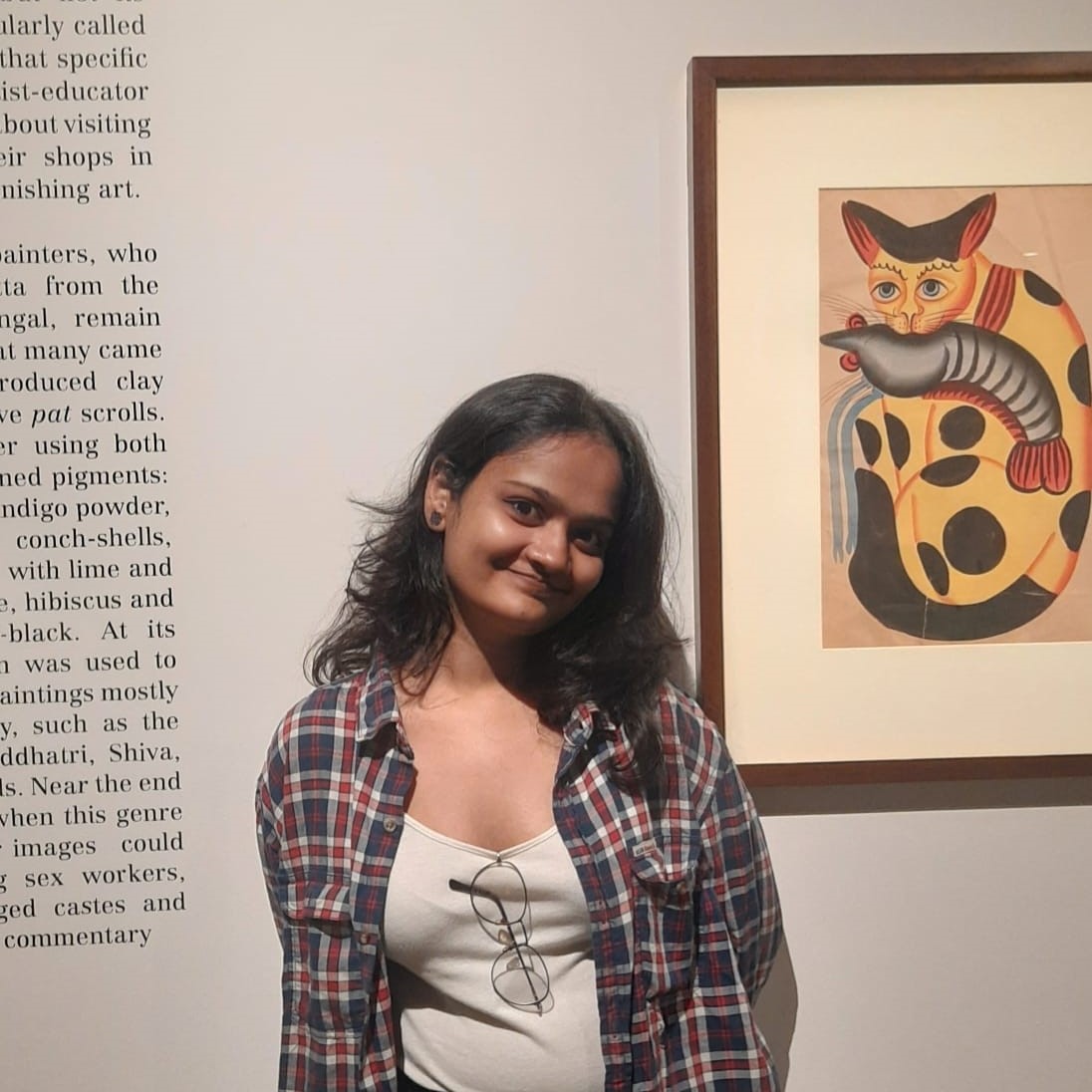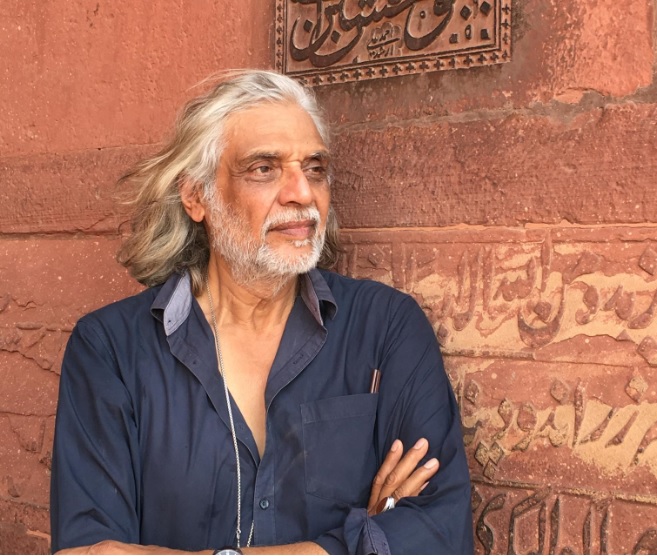Welcome to Samvaad, where art meets conversation, and inspiration knows no bounds. Here we engage in insightful conversations with eminent personalities from the art fraternity. Through Samvaad, Abir Pothi aims to create a platform for thought-provoking discussions, providing readers with an exclusive glimpse into the creative processes, inspirations, and experiences of these creative individuals. From curating groundbreaking exhibitions to pushing the boundaries of artistic expression, our interviews shed light on the diverse perspectives and contributions of these art luminaries. Samvaad is your ticket to connect with the visionaries who breathe life into the art world, offering unique insights and behind-the-scenes glimpses into their fascinating journeys.
This is Part 1 of the Samvaad is between Nidheesh Tyagi from Abir and Jaya Jaitly who is best known for her contributions to the promotion and preservation of Indian handicrafts and textiles. Jaitly has played a significant role in the development of the Indian handicraft sector and has been an advocate for the rights and welfare of artisans. She has been actively involved in various organisations working towards the empowerment of artisans and the promotion of traditional crafts. Jaya Jaitly has also written extensively on Indian crafts, culture, and social issues.
Nidheesh: Hello and welcome to this very special edition of Abir Pothi’s Samvaad. Today, we have Ms Jaya Jaitly with us she is a cultural connoisseur, she has set up Dastkar (Correction, *Dastakari Haat Samiti), she has recently curated the whole exhibition of crafts in the new parliament building she has written a huge mammoth work craft atlas of India. Welcome Jaya ji, Abir Pothi welcomes you. We would want to start talking about the latest work you have done which is about, setting up this whole exhibition in the new parliament and how did you think about it, how did it work? Let’s start from there.
Jaya: Thank you for inviting me first of all. This is a subject close to my heart, not a parliament but crafts as such. And I feel as I get older and more experienced seeing more, I feel that the reach of craft is much much larger and has the potential of much wider than people have so far thought it to be. Before independence, and before the British came and changed all our cultures, we lived with our crafts not as craft objects, not as a decorative object not as something to be put on our walls and kind of fancy. Today handicrafts when you think it becomes something that is online or a dibba (box) on a shelf in the shop but otherwise, whether it is ritual or cooking or clothing or wearing jewellery or even the farmer, anybody who used anything in their life was out of a handcrafted object.
And I think that made the craftsperson also- despite all our problems of caste differences that came about- the craftsperson was a very necessary part of society. But today, things have changed because of British and Western influence, and the power of their media. Also more than anything else, the industrialisation today technology, all technology about marketing anything becomes about going online. So the life and soul of the human being who makes it, the hands of the human being who makes it goes out of the picture and this is all very sad. We used to have crafts in so much of architecture, and interiors, and we should get it back and I believe some of us who have dedicated our lives to it and we understand more and more its potential which was lost. It is our duty to bring it back again.
Nidheesh: So how did you conceptualise this idea because this is a huge work that clearly integrates multiple things such as tradition, nature, and so many women who are part of this whole process?
Jaya: Parliament work you mean?
Nidheesh: Yes.
Jaya: Well, actually most of my work in life becomes a matter of chance. I don’t seek anything, I don’t ask for it, but somehow I found myself appointed on a committee, an advisory committee, to advice on art installations, in the new parliament. So when the committee sat for the first time, we were addressed by the chief architect, who happily and repeatedly mentioned the words arts and crafts, he didn’t just say art. And he also mentioned that the PM was interested in both these things and he gave us some subject matter like unity in diversity and freedom struggle, just two, and he was interested that the art installations should cover these subjects.
But when I found the committee was mostly museum directors, very prominent museum directors or historians or sculptors or scholars, I was the only craft representative in that committee of more than twenty people. And I am not an advisory type of person, I’m a doing kind of person., so by the time the next meeting came, thankful for the fact that they mentioned crafts so prominently, I gave 7 examples, visualisations of how we can use crafts applying it in various ways to these subjects which he had mentioned. Somehow they all like it so much that they said, alright you do them.
So from an advisor, I became an implementor which made me quite happy and then the next couple of meetings, one of them IGNCA. Mentioned to me very surprisingly and very nicely, fatafat (promptly) they mentioned 8 themes. The member secretary of IGNCA, so he said all this some rasta, yatra, aastha, prakriti, parv, swavlamban, ulaas and gyaan. How it came to his head so quickly I don’t know. But also the ideas came to me as quickly so there was some good combination of stars there.
So within 3 days, I was able to visualise each of these, and because I’m so familiar- with 45 years of working in this field must give us some benefits so many many ideas for crafts, and how to use them, plus despite my age, I’m very contemporary and modern in my thinking.
How do we get the old to become new while keeping the essence of its old? So, that is how I approached all of these, so none of them is typical, obvious, actual, realistic simulations of the idea but they are- some of them are fairly direct, some of them have very many layers of meaning which came to me because, again, not just for crafts and art but because one is also deeply entrenched with the culture of our country, despite having studied abroad and work, graduated in english literature, and spent much of my life abroad, my whole life and soul is somehow very closely attached to the rural part of India, the crafts of India. And all my knowledge about Indian culture and what we feel as a country, united and diverse and everything is learnt from my craftspeople so I always have to salute them because I don’t think any historian or scholar or any book could tell me as much as I have learned from just working with them, listening to them and understanding what their capacities are although they may not speak a word. So, it is how I got these ideas I think the inspiration came from that.
Nidheesh: So can you illustrate the best experience, bringing this whole journey and connecting the dots?
Jaya: I think it is probably one of the most exciting and fascinating challenges. I would call it a “challenge”, these days people use the word ‘challenge’ when they don’t want to use the word ‘problem’. But this is not a problem at all, it was a challenge because a challenge is something that makes you step up and do something better, think afresh. So I looked at it as that and again I will repeat what my karigars are saying. They are saying, “Duniya mein zindagi mein sabse accha kaam kiya hoga” (meaning) “I might’ve done wonderful work, big borders? Earned lots of money but this, knowing that this piece of our haath ka kaam (hand’s work) is in parliament- the highest institution of the land- for us is the biggest honour of our lives.”
You know I think for all those people- going back to a little bit of politics- those who shunned the inauguration day and made a big drama out of it. It is really very sad that people can’t rise above the petty politics just for one day, because people argue that oh there is so much poverty and the wrestlers are struggling outside and this has happened and that has happened, but that is for a session of parliament where you are meant to discuss these things. This was only the opening of a new building like anything new, we lit a lamp we celebrate and we may be from opposing groups or parties but we all lit the lamp together. This was a lovely occasion for that and I really feel extremely disappointed with the people who did not come there because they missed out on something very high-minded which was a pity.
Nidheesh: Yes. But politics aside I think nothing can take away from what they have done and what you’ve done, bringing all that together.
Jaya: I suppose so. So the karigars themselves are teaching our MPs a lesson for those who didn’t come. That hamare liye (for us) this was the highest sthaan (place) and our work was there, they haven’t entered it, they haven’t seen it, and they have no hopes of being inside that building but just their one piece of work meant so much to them.
Transcribed by Vaishnavi Srivastava

Vaishnavi Srivastava is a learning writer, a keen researcher and a literature enthusiast. She is a Sub-editor at Abir Pothi.






